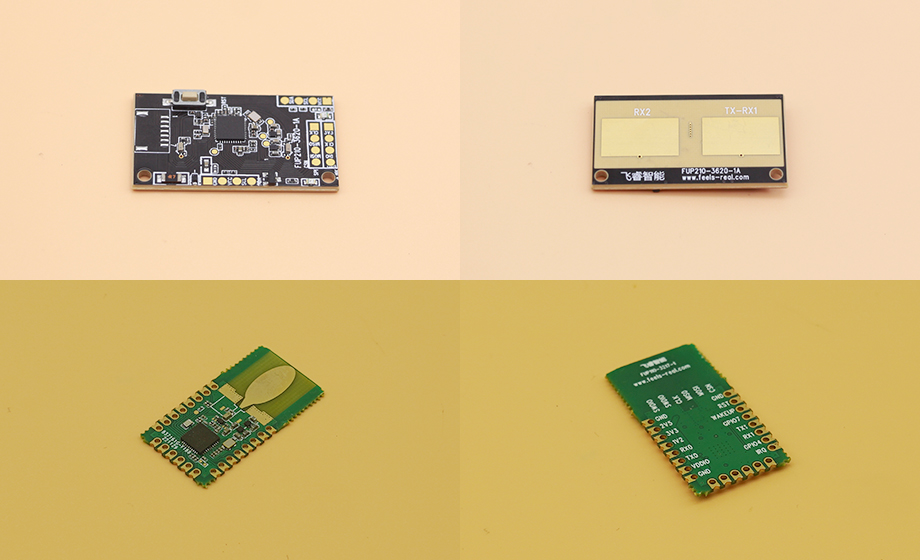With the advent of the Internet of Things era, more and more devices need to be connected through wireless communication, and one of the emerging wireless communication technologies is UWB ultra-wideband technology. This paper will focus on the UWB ultra wideband module related knowledge, including its principle, application field, advantages and challenges.

I. The principle of UWB ultra-wideband technology
Ultra-wideband (UWB) technology is a wireless communication technology that transmits data by sending extremely short pulses over a wide range of frequency bands, with a frequency band width far exceeding that of traditional wireless communication technologies such as Bluetooth and Wi-Fi. UWB technology can transmit data in bands ranging from hundreds of MHz to several GHz, which can reach several thousand MHz or even more than 10GHz.
The principle of UWB communication is to transmit high-speed data by continuously sending extremely short pulse signals, which can reach the time interval of nanoseconds. The time width of the pulse signal transmitted by UWB is very short, only on the order of nanoseconds, so it is very difficult to detect and interfere with. At the same time, the UWB signal has excellent penetration ability, and can pass through some obstacles, such as walls, metal, concrete and water.
2. Application fields of UWB ultra-wideband module
The application field of UWB technology is very wide, including but not limited to the following aspects:
1. Indoor positioning: UWB technology is used to track and locate indoor personnel and equipment, which is very important for security and logistics management.
2. Smart home: UWB technology can connect dozens of smart devices through the Internet of Things, and use the gateway to connect with the Internet, so as to achieve the control and management of smart home.
3. Transportation: UWB technology can be used for vehicle anti-theft, fleet management and road condition monitoring. By using UWB tags and sensors, vehicles can be tracked and tracked for real-time monitoring.
4. Healthcare: UWB technology can be used to track and manage medical devices such as heart monitors and respirators. In addition, it can be used to track the location and status of patients and biomedical devices.
Third, the advantages of UWB ultra-wideband module
UWB technology has the following advantages over traditional wireless technology:
1. High-speed transmission: UWB technology can transmit a large amount of data in a short time, and the transmission speed can reach Gb/s level.
2. Concealment: UWB signal transmission generally uses short distance and low transmission power, reducing the risk of detection and interference.
3. Anti-interference: UWB signal has excellent penetration ability and penetration ability in transmission, which can resist the influence of most interfering factors.
4. Reliability: UWB technology can achieve high-precision positioning in multipath transmission scenarios.
4. Challenges of UWB ultra-wideband modules
As with all new technologies, there are some challenges in the practical application of UWB technology, including but not limited to the following:
1. Standardization issue: Since UWB technology is an emerging technology, the process of standardization and normalization is still in progress. There is no complete standard protocol that can guide the development and implementation of UWB products, which can lead to limited interoperability between UWB devices.
2. Band limitation: The frequency band used by UWB technology overlaps with other wireless technologies, such as Wi-Fi and Bluetooth. Due to limited frequency bands, UWB devices may face restrictions and restrictions in some areas.
3. Cost problem: The cost of equipment and systems based on UWB technology may be much higher than that of traditional wireless communication technology, resulting in low user acceptance.
4. Security issues: UWB signal penetration is strong, vulnerable to infringement and eavesdropping. Therefore, some encryption and protection measures must be adopted to ensure that the data and the user's key are not leaked or stolen during transmission.
V. Conclusion
In general, UWB ultra wideband technology is a wireless communication technology with great potential. It has the advantages of fast transmission speed, good concealment, strong anti-interference and high reliability, and has a wide application prospect in many application fields. At the same time, however, UWB technology still needs to overcome some challenges, such as standardization, band limitations, cost and security issues.
UWB ultra-wideband module is the core of UWB technology application, which has many application scenarios and potential commercial value. Therefore, when designing and developing UWB modules, it is necessary to take into account their interoperability with other devices, and adopt some encryption and protection measures to ensure the security of data.
In the future, with the continuous development and improvement of UWB technology, it is expected to become one of the important wireless communication technologies in the era of Internet of Things.



